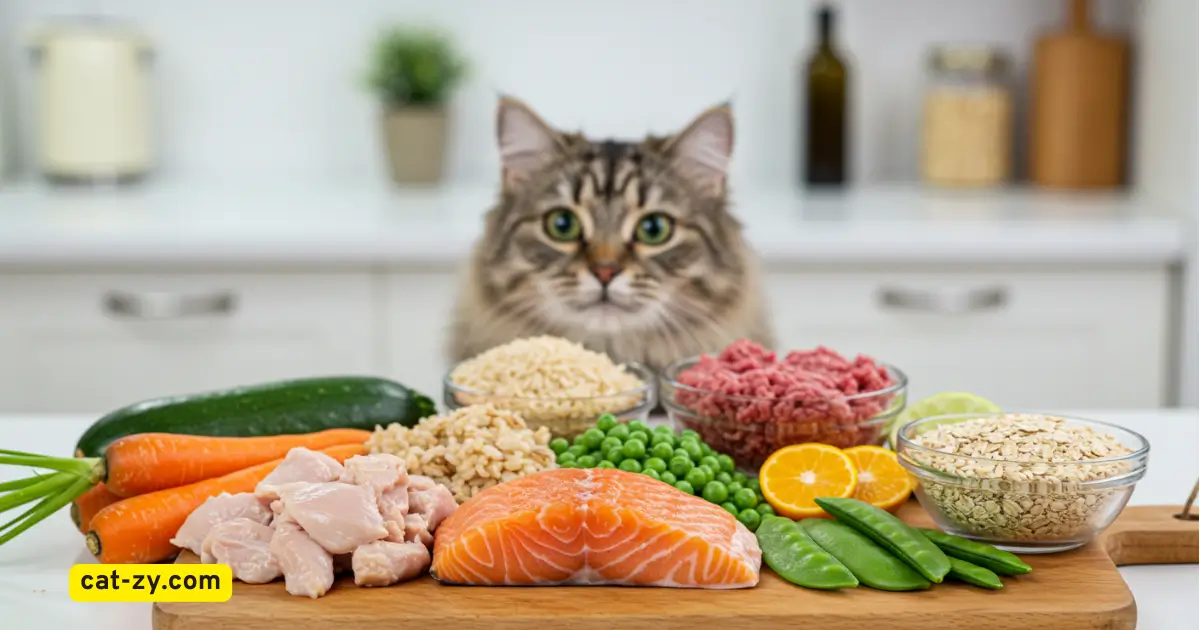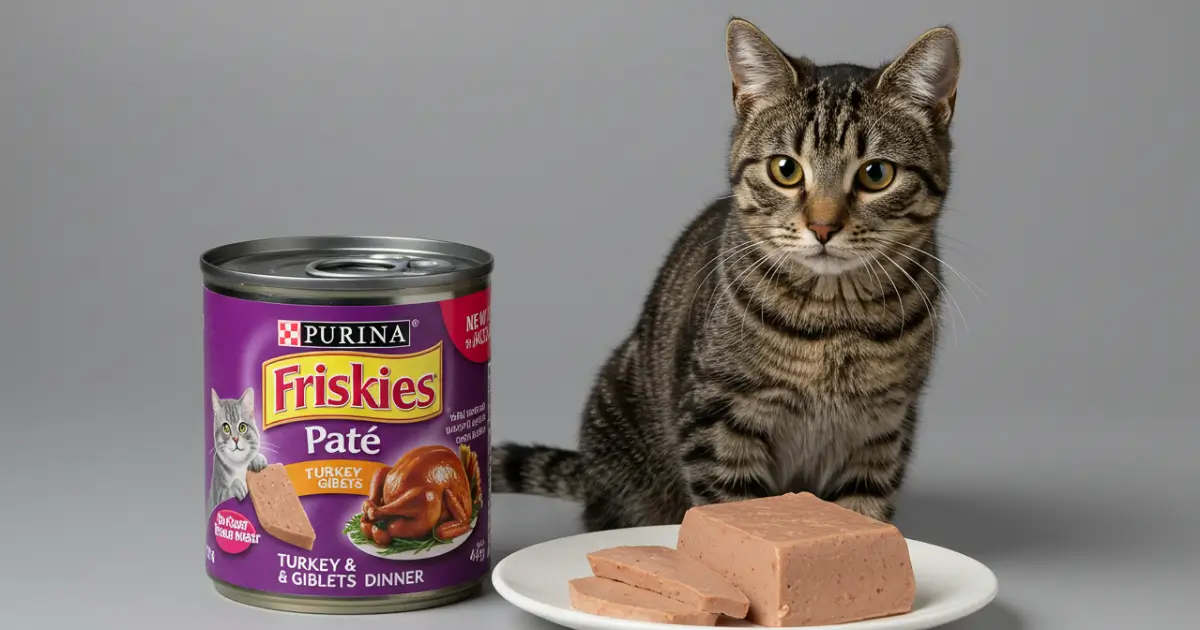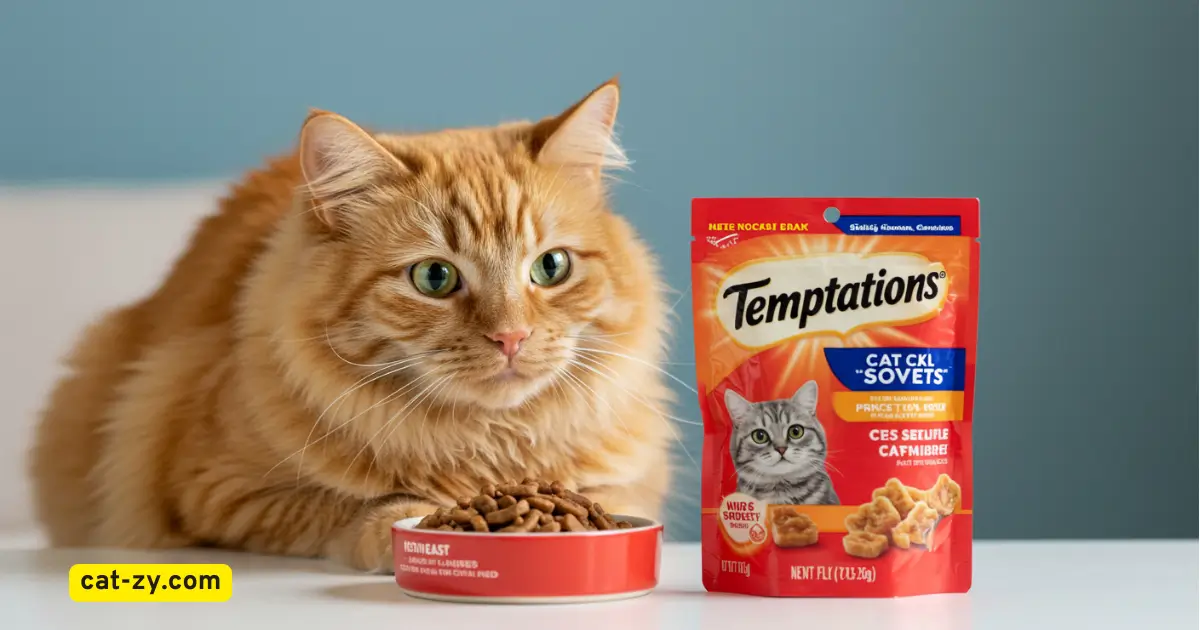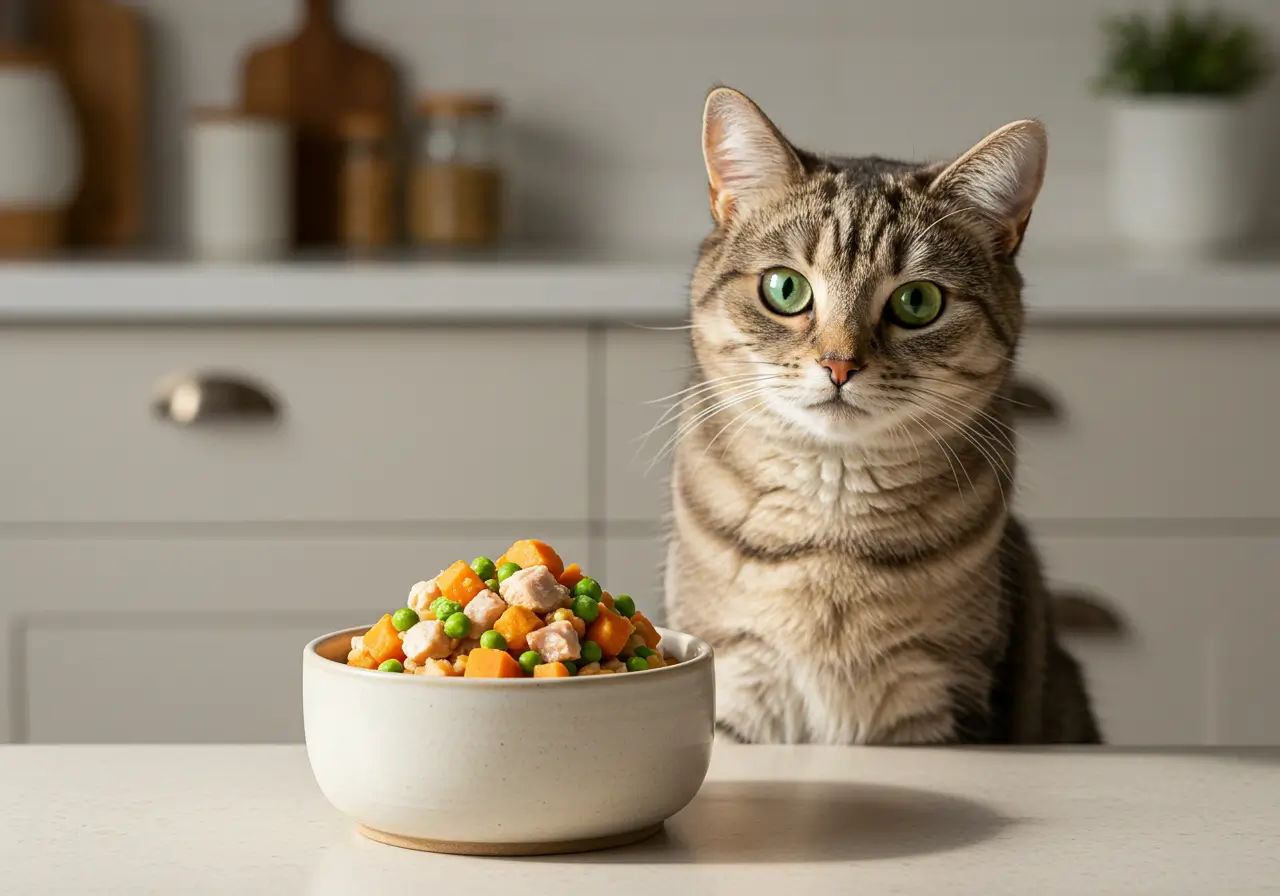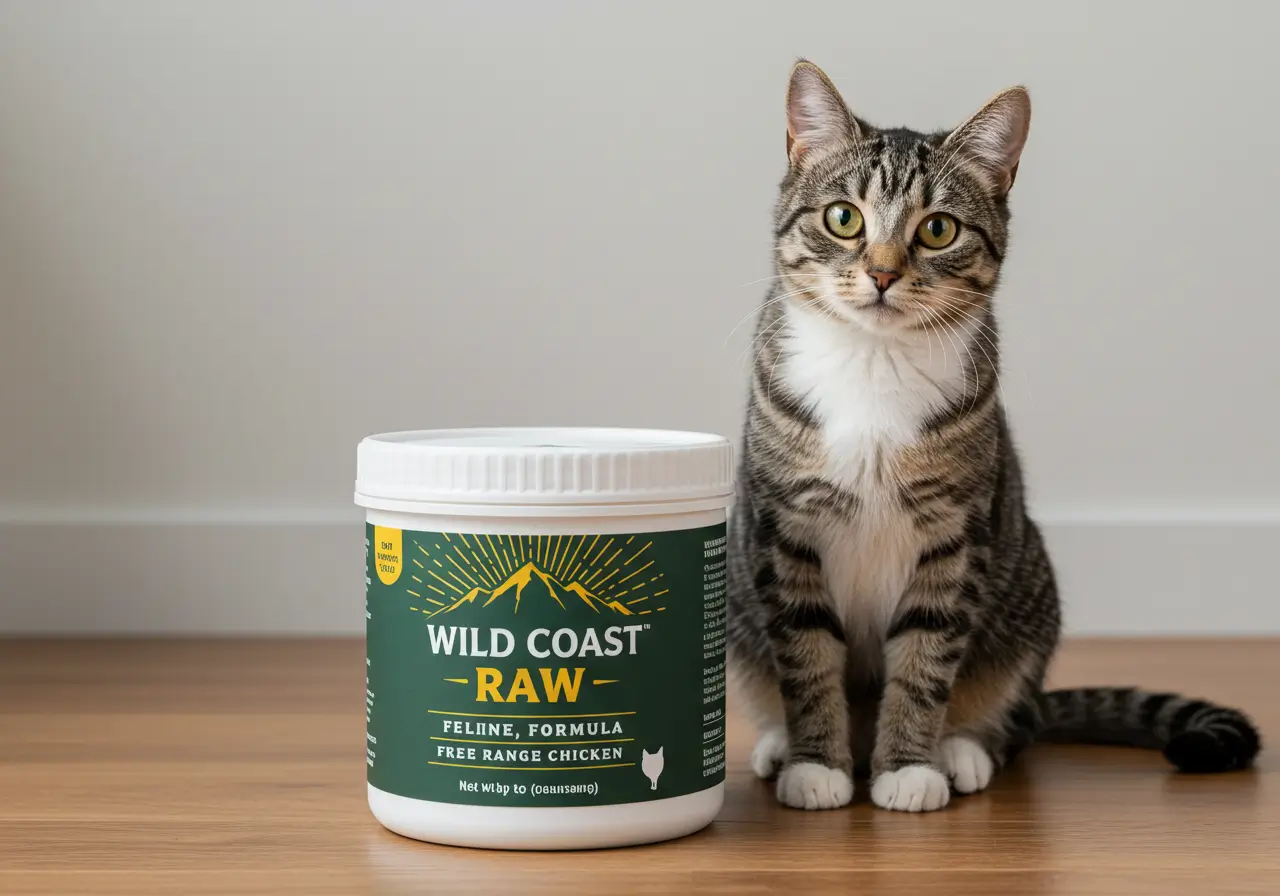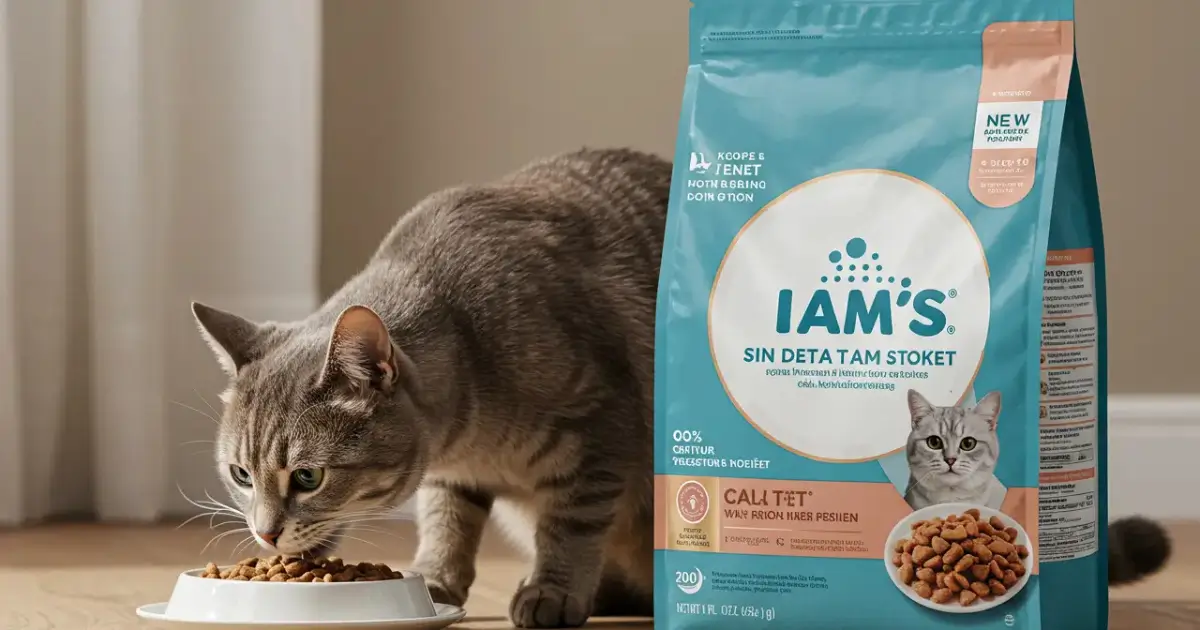Making Cat Food at Home: Tips and Ideas
Have you ever watched your cat eat a store-bought meal and thought about a better option? Making cat food at home lets you control what they eat. It’s a way to ensure your cat gets the best nutrition.
With homemade meals, you can choose fresh proteins and gentle flavors. This way, you can match their taste preferences and health needs.
Making cat food at home can save money and avoid additives. This article will guide you on how to start. You’ll find easy recipes and expert advice. Learn how homemade meals can give your cat more energy, better digestion, and a stronger bond with you.
Table of Contents
Understanding the Benefits of Making Cat Food at Home
Feeding your cat homemade food has many benefits. You control every ingredient, ensuring balanced nutrition without additives. This way, you avoid preservatives and fillers found in store-bought foods.
Nutritional Control for Your Feline Friend
making cat food at home lets you manage protein, fats, and vitamins precisely. Choose high-quality meats like chicken or turkey. Add vet-approved veggies like peas or carrots. This ensures your cat gets the nutrients they need, supporting their health.
Customized Flavors and Dietary Adjustments
Cats have their own tastes, and homemade recipes let you experiment. If your cat doesn’t like something, you can change it. For sensitive stomachs, you can reduce onions or garlic. Making meals yourself means you can tailor each bite to your pet’s preferences and needs.
Cost-Effectiveness and Freshness
Buying premium commercial food can be expensive. Making meals at home is often cheaper and fresher. Batch cooking and freezing saves time without losing quality. Fresh ingredients can boost your cat’s energy and coat shine.
Essential Ingredients and Substitutions for Your Cat’s Diet
Creating balanced cat food recipes starts with knowing which ingredients provide the nutrients your feline needs. High-quality proteins like chicken, turkey, or salmon form the foundation. Look for human-grade meats from brands like Wellness or Feline Naturals to ensure purity and safety. Avoid processed meats with additives.
Choosing High-Quality Proteins
Proteins should make up 70% of your cat’s diet. Opt for lean cuts or canned options packed in broth rather than salted water. Eggs and cooked fish like wild-caught salmon add omega-3s, but always cook thoroughly to eliminate parasites. Rotate proteins weekly to avoid monotony in cat food recipes.
Healthy Carbohydrates and Vegetables
While cats are carnivores, small amounts of vegetables and carbs aid digestion. Steam carrots, peas, or green beans to soften fibers. Sweet potatoes offer vitamins but use sparingly—no more than 10% of the meal. Avoid onions, garlic, and grapes, which are toxic. Brands like Blue Buffalo offer pre-mixed veggie blends safe for feline diets.
Safe Substitutions for Sensitive Cats
Allergies or sensitivities? Swap common ingredients thoughtfully. Replace chicken with duck or venison for protein allergies. For carb intolerances, try pumpkin puree instead of grains. Always introduce substitutions gradually, monitoring your cat’s stool and energy levels. Consult your vet before major changes to ensure cat food recipes stay nutritionally complete.
Simple Homemade Cat Food Recipes to Try Today
Start with a homemade cat food recipe that’s easy to prepare. Mix cooked ground turkey (unseasoned) with steamed carrots and a bit of plain Greek yogurt. This mix gives your cat protein, fiber, and probiotics in a tasty meal.
Always make sure meats are fully cooked to avoid raw diet risks.
Another great option for making cat food at home is a chicken and sweet potato blend. Boil diced chicken breast until it’s tender, then mash cooked sweet potato and mix it with a bit of salmon oil for omega-3 benefits. Store leftovers in the fridge for 3-4 days.
These homemade cat food recipes use common pantry items but focus on balanced nutrition.
For cats with sensitive stomachs, try a pumpkin and turkey recipe. Mix unsweetened pureed pumpkin with shredded turkey for gentle digestion support. Always introduce new foods slowly. Use a food scale to measure portions accurately—most adult cats need 2-3% of their body weight daily.
Tip: Avoid garlic, onions, and bones. Grind ingredients into small pieces for easier digestion. While these recipes are a great start, talk to your vet before making them a permanent diet. Adjust portions based on your cat’s activity level and health needs.
Expert Advice for Nutritional Balance in Homemade Cat Food
making cat food at home is more than just following recipes. It needs expert advice to ensure your cat gets all the nutrients they need. Here’s how to get help from professionals:
Consulting with Veterinary Nutritionists
Veterinary nutritionists, like those from the American College of Veterinary Nutrition (ACVN), create diets for your cat. They can review your recipes for important nutrients like taurine and vitamin E. They’ll spot any missing nutrients that you might not see.
Adjusting Recipes for Age and Health Needs
Kittens, seniors, and cats with health issues need special diets. For example, older cats might need less sodium and more omega-3 fatty acids. Work with your vet to change recipes to meet your cat’s needs.
Monitoring Your Cat’s Health Over Time
Watch for changes in your cat’s weight, coat, and litter box habits every week. Have blood tests done every six months to check for nutrient deficiencies. If your cat seems tired or has digestive problems, talk to your vet right away. Regular checks help keep your cat’s diet balanced.
Addressing Common Concerns About Making Cat Food at Home
Many cat owners worry about nutritional adequacy when making cat food at home. To ensure balance, use high-quality proteins like chicken or salmon. Add vet-approved veggies like carrots or green beans. Always follow recipes that meet AAFCO nutrient profiles, and check with your vet for any needed adjustments.
Concerned about ingredient sourcing? Buy from reputable stores like Petco or local butchers for fresh meat. Choose organic produce when you can. Remember, avoid toxic foods like garlic or grapes. Pre-wash all vegetables and store ingredients in airtight containers to keep them fresh.
Safety is crucial. Cook proteins thoroughly to kill pathogens. Refrigerate meals within two hours. Don’t use raw diets unless your vet says it’s okay, especially for kittens or cats with weak immune systems. Use separate cutting boards for raw and cooked ingredients to avoid cross-contamination.
Time constraints a problem? Prep meals in batches. Cook large amounts weekly, then freeze portions in labeled containers. Slow cookers make it easy—simmer ingredients for hours, then portion out for quick thawing.
With careful planning and vet guidance, you can overcome these worries. You can make safe, nourishing meals your cat will enjoy.
Conclusion
making cat food at home lets you control what your cat eats. You can use fresh ingredients to avoid additives and ensure balanced nutrition. This way, you save money and know your pet is eating quality food.
Begin with simple recipes, but always check with a vet or a certified pet nutritionist. They can help make sure the food is right for your cat’s age, health, or any dietary issues. Regular vet visits help you see how your cat reacts to new foods.
making cat food at home can really help your pet’s health if done right. Focus on using high-quality proteins and get advice from experts. Making small batches lets you easily change recipes to keep your pet’s health first.
FAQ
What are some easy recipes for making cat food at home?
Start with simple recipes like chicken and rice, or tuna and pumpkin. These recipes mix cooked chicken or tuna with rice or pumpkin puree. This provides protein and carbs. Make sure the ingredients are safe and good for your cat.
What steps can I take to make sure the homemade food I prepare for my cat is nutritionally complete?
For balanced nutrition, talk to a vet nutritionist. They can help with the right ingredients and amounts. Use high-quality proteins, healthy carbs, and essential vitamins and minerals in your recipes.
Are there any ingredients I should avoid when making cat food at home?
Yes, avoid onions, garlic, chocolate, and caffeine. They’re toxic to cats. Also, limit grains and fillers, as they’re not always good for cats.
Is it possible to repurpose leftover food from my meals to prepare cat food?
Some cooked meats and veggies are okay, but check for seasonings or harmful ingredients. Always confirm the leftovers are safe for your cat before using them in recipes.
How often should I prepare homemade cat food?
Preparation frequency depends on your schedule and your cat’s needs. Many prepare meals weekly, storing them in the fridge or freezer. Adjust recipes as needed, especially for health concerns.
Why is it beneficial to prepare cat food at home?
making cat food at home lets you control nutrition and flavors. It’s also fresh and can save money compared to commercial food.
What are the safe substitutions for sensitive cats?
For sensitive cats, try turkey or venison instead of chicken. Use carrots or green beans instead of common veggies. Introduce new foods slowly to watch for reactions.

